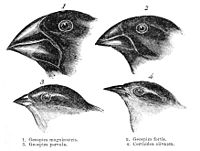
A comparative plastomics approach reveals available molecular markers for the phylogeographic study of Dendrobium huoshanense, an endangered orchid with extremely small populations
Sign Up to like & getrecommendations! Published in 2020 at "Ecology and Evolution"
DOI: 10.1002/ece3.6277
Abstract: Abstract Comparative plastomics approaches have been used to identify available molecular markers for different taxonomic level studies of orchid species. However, the adoption of such methods has been largely limited in phylogeographic studies. Therefore, in… read more here.
Keywords: small populations; study; extremely small; molecular markers ... See more keywords

Portfolio effects, climate change, and the persistence of small populations: analyses on the rare plant Saussurea weberi.
Sign Up to like & getrecommendations! Published in 2017 at "Ecology"
DOI: 10.1002/ecy.1738
Abstract: The mechanisms that stabilize small populations in the face of environmental variation are crucial to their long-term persistence. Building from diversity-stability concepts in community ecology, within-population diversity is gaining attention as an important component of… read more here.
Keywords: portfolio effects; plant; portfolio; small populations ... See more keywords

Moderate Amounts of Epistasis are Not Evolutionarily Stable in Small Populations
Sign Up to like & getrecommendations! Published in 2020 at "Journal of Molecular Evolution"
DOI: 10.1007/s00239-020-09942-4
Abstract: High mutation rates select for the evolution of mutational robustness where populations inhabit flat fitness peaks with little epistasis, protecting them from lethal mutagenesis. Recent evidence suggests that a different effect protects small populations from… read more here.
Keywords: moderate amounts; epistasis evolutionarily; small populations; amounts epistasis ... See more keywords

Contribution of genetics for implementing population translocation of the threatened Arnica montana
Sign Up to like & getrecommendations! Published in 2018 at "Conservation Genetics"
DOI: 10.1007/s10592-018-1087-2
Abstract: Ecological restoration programmes aiming at population recovery of imperilled plant species increasingly involve plant translocations. Evaluating the genetic status of seed source and target populations is essential for designing plant translocation protocols and optimizing recovery… read more here.
Keywords: seed; arnica montana; genetics; small populations ... See more keywords

Boosting to Amplify Signal with Isobaric Labeling (BASIL) Strategy for Comprehensive Quantitative Phosphoproteomic Characterization of Small Populations of Cells.
Sign Up to like & getrecommendations! Published in 2019 at "Analytical chemistry"
DOI: 10.1021/acs.analchem.9b00024
Abstract: Comprehensive phosphoproteomic analysis of small populations of cells remains a daunting task due primarily to the insufficient MS signal intensity from low concentrations of enriched phosphopeptides. Isobaric labeling has a unique multiplexing feature where the… read more here.
Keywords: comprehensive quantitative; populations cells; small populations; quantitative phosphoproteomic ... See more keywords

The costs and benefits of dispersal in small populations
Sign Up to like & getrecommendations! Published in 2022 at "Philosophical Transactions of the Royal Society B: Biological Sciences"
DOI: 10.1098/rstb.2021.0011
Abstract: Dispersal has three major effects on adaptation. First, gene flow mixes alleles adapted to different environments, potentially hindering (swamping) adaptation. Second, it brings in other variants and inflates genetic variance: this aids adaptation to spatially… read more here.
Keywords: small populations; genetic drift; dispersal; adaptation ... See more keywords

Unexpected high genetic diversity in small populations suggests maintenance by associative overdominance
Sign Up to like & getrecommendations! Published in 2017 at "Molecular Ecology"
DOI: 10.1111/mec.14262
Abstract: The effective population size (Ne) is a central factor in determining maintenance of genetic variation. The neutral theory predicts that loss of variation depends on Ne, with less genetic drift in larger populations. We monitored… read more here.
Keywords: diversity; associative overdominance; genetic diversity; maintenance ... See more keywords

Adaptive and maladaptive genetic diversity in small populations: Insights from the Brook Charr (Salvelinus fontinalis) case study
Sign Up to like & getrecommendations! Published in 2020 at "Molecular Ecology"
DOI: 10.1111/mec.15566
Abstract: Investigating the relative importance of neutral versus selective processes governing the accumulation of genetic variants is a key goal in both evolutionary and conservation biology. This is particularly true in the context of small populations,… read more here.
Keywords: adaptive maladaptive; brook charr; small populations; salvelinus fontinalis ... See more keywords